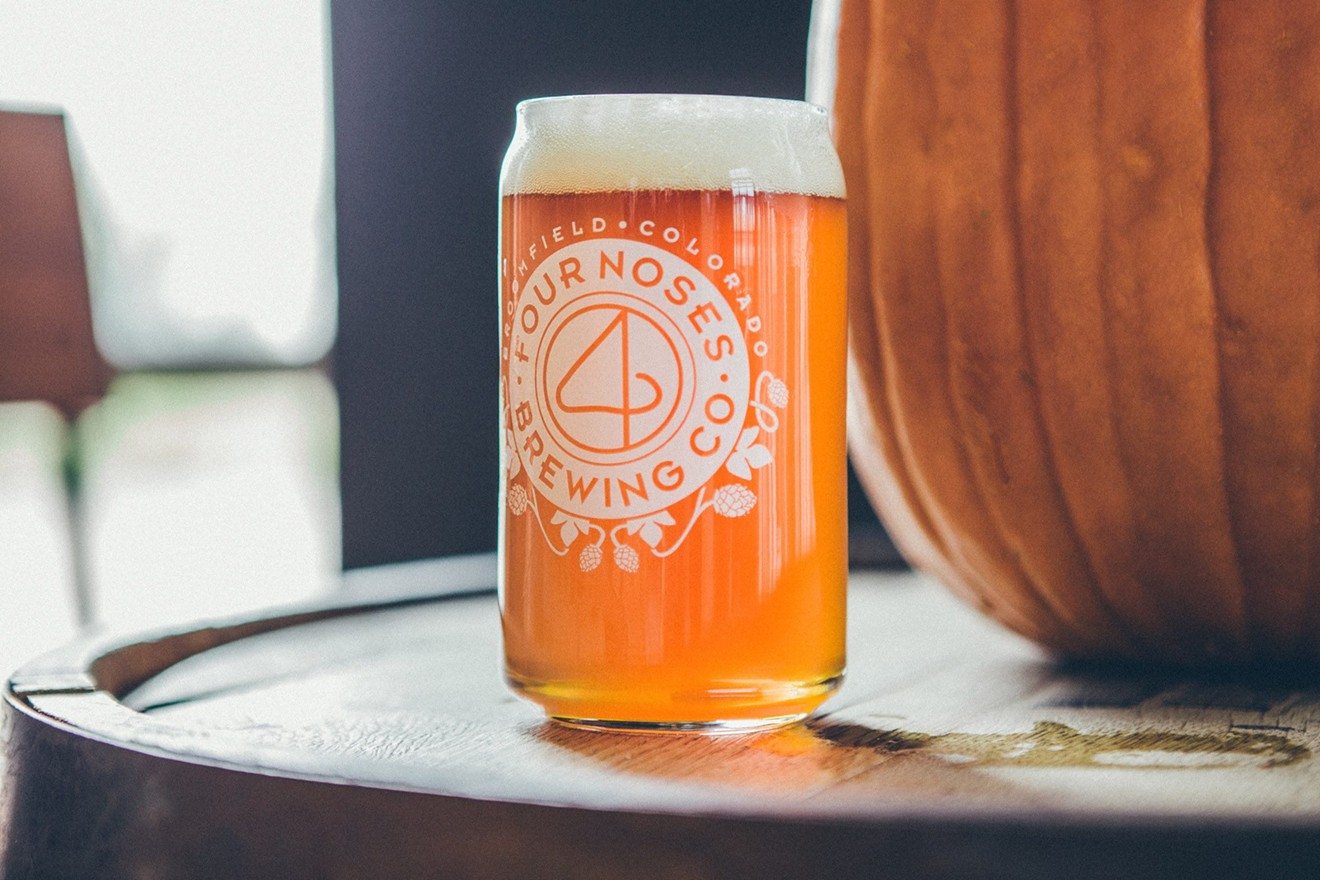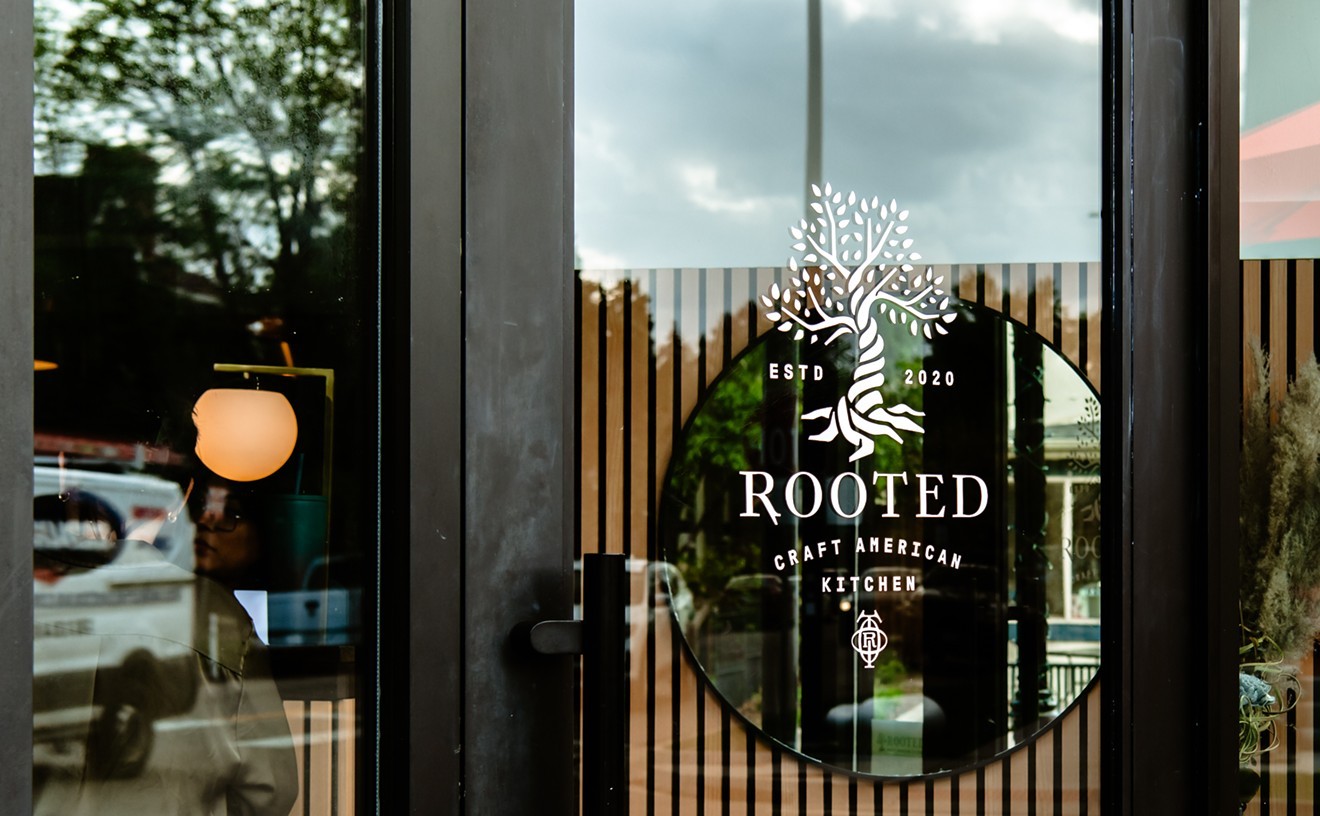I love pumpkin beers. There, I said it. I love a sweet, malty, gourd-based ale layered over with cinnamon, clove, nutmeg, allspice, ginger and maybe some honey. Ramp up the alcohol content and put the whole thing in a rum barrel, and I’ll wait up all night in the pumpkin patch with Linus and Sally to get a taste of it.
In years past, I've collected dozens of pumpkin-beer varieties, hosted pumpkin-beer tastings and imbibed with abandon — all because I love pumpkin beers.
More recently, though, I've enjoyed fewer pumpkin beers, and I don't really brag about the ones I drink. The problem? The coolness factor — yes, pumpkin beers were cool once — has declined so precipitously that my pumpkin proclivities now put me in a precarious place. I'm in danger of derision. But now I've decided to fight back, to own my love for pumpkin beers, all in the hope that they will one day return to glory.
How did we get to this place? Here's the story.
The first pumpkin beer I ever tried, in September 1996, was Harvest Moon, from Coors Brewing's Blue Moon division, and it was magical; months later, when I found a trove of warm six-packs of this beer while on a road trip in Nebraska, I loaded up my trunk. A connoisseur of pumpkin pies, pumpkin lattes and pumpkin bread, I instantly incorporated pumpkin beers into my fall traditions: flannel shirts, football, chili, leaf-peeping and beer.
And I wasn't alone. Pumpkin beers developed a rabid following over the next two decades of people who enjoy the spices and look forward to their fall-flavored treats every autumn. There are now entire blogs dedicated to pumpkin beers, annual tasting parties, and not one, but two pumpkin categories at the Great American Beer Festival — one for pumpkin/squash beers and one for pumpkin spice brews.
But in the last five years or so, as the number of breweries in the United States shot upward from 2,500 in 2012 to more than 5,400 today, and competition increased, pumpkin beers flooded the market. Worse, they began hitting shelves and tap handles in the summer as breweries jostled for retail space, all of them trying to get these surefire sellers sold by November 1 — which, by the way, is when people immediately stop buying them.
"I think the industry shot themselves in the foot with this," says Tommy Bibliowicz, the owner of 4 Noses Brewing in Broomfield. "I love the fall, when the temperatures get cooler and we have changing leaves and football. Pumpkin beers are supposed to be a part of that, so the reason people are so angry is because when pumpkin beers are coming out in July and August, when I'm still drinking pilsners, it loses sight of that."
In 2016, pumpkin beers faced dual crises: a pumpkin shortage (never forget!) that left breweries scrambling for ingredients, and a glut on the market that resulted in dust-covered stacks of warm pumpkin beers moldering on liquor-store floors like last year’s Halloween candy — an embarrassing symbol of excess gone wrong.
“It’s pretty clear that the bloom is off the pumpkin,” Bart Watson, the economist for the Brewers Association trade group told the Washington Post, which wrote a story about pumpkin beers last month. Craft-beer sales in August and September 2016 were off by 8.5 percent over the previous year, he added. “A lot of weakness clearly stems from pumpkin beers, which weren’t ordered by distributors at the same level as previous years and are clearly generating less interest than in recent years,” Watson told the newspaper.
Adding insult to injury: Last year's GABF judges declined to award gold or silver medals in the pumpkin/squash category, admonishing the nation’s brewers in the process.
The situation has provided plenty of fodder for the pumpkin haters, from brewers themselves to beer drinkers in online forums and casual pumpkin observers. These angry people have always been around, but now they felt like they could speak up, unfettered by possible backlash from the guarders of the gourds.
Derision, mockery, event "beer shaming," as Bibliowicz calls it, followed. "I have always really enjoyed them," he says. "I'm not ashamed or shy about that at all. It was one of the first beers that my dad and I ever home-brewed, for Thanksgiving. You're talking about a beer that has been popular for a long time, and people's tastebuds haven't changed that fast. It's just that there is a lot of hate for them out there.
"And it's ironic, because pumpkin beers are better now than they have ever been," he adds.
4 Noses knows. It won gold medals in the pumpkin spice category (not pumpkin/squash; remember, the judges didn't give golds in that one) at both the World Beer Cup and GABF in 2016 for Pump Action, its imperial pumpkin ale. That beer returned on September 1 this year, but 4 Noses isn't entering it at GABF this time around, because Bibliowicz would like to see some of his other beers get some recognition.
GABF will have no problem finding contenders, though. In 2016, breweries entered 39 beers into the pumpkin spice category and ten into the pumpkin/squash category, the Brewers Association says. This year, there will be 56 pumpkin spice beers judged at GABF (October 5-7) and fourteen pumpkin/squash ones. Whether anyone wins gold in that second category is anyone's guess. "It's a weird category," Bibliowicz says. "I'm not familiar with beers that taste like pumpkin, because pumpkin is merely a vessel for all of the spice in the beer."
The first modern commercial pumpkin beer was reportedly brewed in 1985 by Bill Owens, the founder of Buffalo Bill’s Brewery in Hayward, California. The style took some time to build a following, however. Even a decade later, in 1995, when Blue Moon released a pumpkin ale as its first fall seasonal, the style wasn't a big deal.
"It took a while for the unique flavor and style to catch on with the greater beer-drinking population," Blue Moon founder Keith Villa tells Westword in an email. "At the time, there was a lot of demand for Oktoberfest beers, but we wanted to create something a little different that was inspired by the flavors of the season. After several years, it really took off, and ours became the best-selling pumpkin beer in the country.
"Nowadays, you can’t get pumpkin beer out fast enough. We release Blue Moon Harvest Pumpkin Wheat in August, because it's when people first start to get pumpkin on their minds," Villa adds. "Fall has become synonymous with pumpkin beer for many. I’m thrilled that the style has taken off and that our first autumn seasonal has survived the test of time for over twenty years."
By 2005, pumpkin beers had become a staple, and over the next few years, fans began to excitedly greet their arrival on shelves, sometimes lining up to buy them before they sold out. Notable national pumpkin beers from the 2000s were made by Elysian, Shipyard, Dogfish Head, Southern Tier and New Holland. In Colorado, people would circle Bristol Brewing to score its annual Venetucci Pumpkin Ale — a beer that became so popular that people were selling it on the aftermarket for ridiculous prices. In 2011, they did the same thing when Avery Brewing began bottling Rumpkin, a 16 percent ABV cult favorite that was aged in bourbon barrels.
Also in 2011, the Brewers Association added pumpkin beers to a GABF category for the first time with the Field Beer/Pumpkin category (which Upslope Brewing won gold for that year) and then broke pumpkin beers into their own category in 2014. It split the category in 2016 to its current configuration.
Dry Dock Brewing has never entered its pumpkin beers into competition at the Great American Beer Festival, but the Aurora brewery has been making them since it opened in 2005 — and they have a loyal following.
Half Moon Pumpkin Ale, at about 4.5 percent ABV, which will go on tap in a week or so, is the main beer that Dry Dock sells in its taproom. "Last year, we sold out in four weeks," says Dry Dock co-founder Kevin DeLange, adding that the brewery increased production of Half Moon by 50 percent this year. Dry Dock also bottled a bourbon-barrel-aged version of its Imperial Pumpkin Ale, which it has made in the past.
"Pumpkin beers are still really popular. Fall is a beautiful time here, and I think people look forward to the changing of the seasons. It's ingrained into us from childhood," DeLange says.
Some of Dry Dock's retail customers have pulled back a little when it comes to pumpkin beers, but DeLange believes the style will continue to thrive as long as people look forward to fall.
Bibliowicz, too, believes in the great pumpkin beers. "It's tough to brew, and we get negative feedback from people who don't like them. But this is a labor of love, and we aren't brewing it for those people. We're brewing it for the people who enjoy it and who want to drink it," he says.
People like me.
I, too, look forward to the changing of the seasons and the feelings that inspires. As a result, I will mostly continue to ignore pumpkin beers that come out in the summer so that I can enjoy them in September and October. And I think it might be a good thing in the long run that pumpkin beers have backed themselves into a sorry state of affairs. Perhaps that's what the style needs before it can rise again — stronger but in smaller numbers, later in the season and with a return to the niche audience that loves a little spice.
[
{
"name": "Air - MediumRectangle - Inline Content - Mobile Display Size",
"component": "12017618",
"insertPoint": "2",
"requiredCountToDisplay": "2"
},{
"name": "Editor Picks",
"component": "17242653",
"insertPoint": "4",
"requiredCountToDisplay": "1"
},{
"name": "Inline Links",
"component": "18838239",
"insertPoint": "8th",
"startingPoint": 8,
"requiredCountToDisplay": "7",
"maxInsertions": 25
},{
"name": "Air - MediumRectangle - Combo - Inline Content",
"component": "17261320",
"insertPoint": "8th",
"startingPoint": 8,
"requiredCountToDisplay": "7",
"maxInsertions": 25
},{
"name": "Inline Links",
"component": "18838239",
"insertPoint": "8th",
"startingPoint": 12,
"requiredCountToDisplay": "11",
"maxInsertions": 25
},{
"name": "Air - Leaderboard Tower - Combo - Inline Content",
"component": "17261321",
"insertPoint": "8th",
"startingPoint": 12,
"requiredCountToDisplay": "11",
"maxInsertions": 25
}
]















